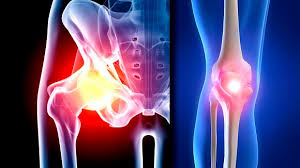- Home
- Editorial
- News
- Practice Guidelines
- Anesthesiology Guidelines
- Cancer Guidelines
- Cardiac Sciences Guidelines
- Critical Care Guidelines
- Dentistry Guidelines
- Dermatology Guidelines
- Diabetes and Endo Guidelines
- Diagnostics Guidelines
- ENT Guidelines
- Featured Practice Guidelines
- Gastroenterology Guidelines
- Geriatrics Guidelines
- Medicine Guidelines
- Nephrology Guidelines
- Neurosciences Guidelines
- Obs and Gynae Guidelines
- Ophthalmology Guidelines
- Orthopaedics Guidelines
- Paediatrics Guidelines
- Psychiatry Guidelines
- Pulmonology Guidelines
- Radiology Guidelines
- Surgery Guidelines
- Urology Guidelines
Stem cell injections: New knee reliever

Stem cell injections are emerging as an efficacious option for joint pain. Accruing evidences of its application point to its immense potential of functional intervention into joints. The new option, being still in experimental stage, needs a thorough evaluation to make it official.
Dr. Aashish Chaudhry, managing director and orthopedic surgeon, Aakash Healthcare said, "Stem cell intervention in the treatment of joints might prove revolutionary. The outcomes are encouraging but unless sufficient clinical evidence accumulates, to announce it as an alternative of knee replacement will be quite immature. Stem cells inventions have been in vogue for quite some time in some cases. No doubt it is quite promising and futuristic and being in the reckoning."
"Stem cells do not seem so effective in spinal cord injuries. It is being tested in paraplegic patients (paralysis of the legs and lower body) but, no one as yet has stood on his legs and started walking. In some cases of course, the bowel movement restored after stem cell therapy. But it has not been definitively found that it happened due to stem cell injections. It might have been due to natural healing processes that are on always in the body," he said.
Stem cells are special types of cells with innate ability to self-renew or multiply. They have a tremendous capacity to differentiate and form different tissues. These may be behind regenerating cartilage, regenerating nerve cells and healing any injured tissue.
The source of stem cells is found in one's own bone marrow or fat. One can also receive stem cells from donor sources, particularly amniotic sources such as the placenta or the amniotic fluid. The number of stem cells that one has and their quality and activity lessens as people get older.
How stem cell treatment works
Autologous adipose tissue derived mesenchymal stemcell (AD-MSCs) are known to have potential cartilage regeneration. These stem cells are injected precisely into the joint, ligament or tendon. Academically, the cells will then divide and duplicate themselves and develop into different types of cells depending on the location into which they have been injected. For example, if one has a damaged knee cartilage, stem cells placed near the damaged cartilage can develop into new cartilage tissue.
However, for patients with a severe loss of cartilage or no cartilage at all, a stem cell injection is unlikely to create a new joint. It can, nevertheless, improve symptoms of pain and swelling. It's the biological reaction which makes the environment in joints a little healthier, making it less inflamed, and as a result, gives less pain.
Risks
The main risk involved is of infection at the donor site while harvesting the stem cells.
Treatment is in its infancy
While the use of stem cell injections to treat joint pain holds much promise, we really don't know what's effective, what's not effective, how many cells are necessary, how many actual injections one needs and how often. This treatment option is still very new. Researchers need to study its effectiveness further.

Disclaimer: This site is primarily intended for healthcare professionals. Any content/information on this website does not replace the advice of medical and/or health professionals and should not be construed as medical/diagnostic advice/endorsement or prescription. Use of this site is subject to our terms of use, privacy policy, advertisement policy. © 2020 Minerva Medical Treatment Pvt Ltd